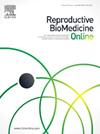供体受孕融入身份和父母依恋:异性恋夫妇和女同性恋夫妇家庭中的青少年。
IF 3.7
2区 医学
Q1 OBSTETRICS & GYNECOLOGY
引用次数: 0
摘要
研究问题:在异性恋和女同性恋家庭的青少年中,父母依恋是否与捐卵和捐精后的身份认同整合有关?设计:在2022-2023年进行了一项横断面调查,作为一项对有捐胎儿童的双亲家庭的纵向研究的一部分。在接触的128名供体怀孕的青少年中,有100人(78%的回复率)参与了调查。采用亲子依恋量表和同伴依恋量表对青少年的父母依恋进行了测量,并采用供体概念认同问卷的好奇和回避子量表对供体概念认同进行了整合。数据分析采用多元线性回归分析。结果:对父亲/共同母亲依恋等级较高的青少年对其供体来源的好奇程度较低(P = 0.010)。虽然显示出较小的影响(R2 = 0.073),但在控制捐赠组、性别和年龄时仍然存在显著关系。与生母依恋没有关系(P = 0.125)。父母依恋与他们对供体受孕的回避感无关。总体而言,青少年对父母双方的依恋安全感评分较高,而对供体受孕的好奇心和回避感评分相对较低。结论:在异性恋和女同性恋家庭的青少年中,对共同父母的依恋比对生母的依恋更能影响他们对供体受孕的好奇心,这表明在有可能获得供体信息的家庭中,供体受孕的心理复杂性。本文章由计算机程序翻译,如有差异,请以英文原文为准。
Integration of donor conception into identity and parental attachment: adolescents in heterosexual-couple and lesbian-couple families
Research question
Is parental attachment related to the integration of donor conception into identity among adolescents in heterosexual-couple and lesbian-couple families following identity-release oocyte and sperm donation?
Design
A cross-sectional survey was conducted in 2022–2023 as part of a longitudinal study on two-parent families with donor-conceived children. Of 128 donor-conceived adolescents approached, 100 (78% response rate) participated. Adolescents’ attachment to their parents was measured with the validated Inventory of Parent and Peer Attachment instrument, and integration of donor conception into identity with the Donor Conception Identity Questionnaire subscales Curiosity and Avoidance. Data analyses were performed with multiple linear regression analyses.
Results
Adolescents with more secure ratings of attachment to their father/co-mother were less curious about their donor origin (P = 0.010). Although showing a rather small effect (R2 = 0.073), the significant relationship remained when controlling for donation group, gender and age. No relationship was found concerning attachment to the birth mother (P = 0.125). Parental attachment was not related to feelings of avoidance with regards to their donor conception. Overall, the adolescents reported high ratings of attachment security to both parents and relatively low ratings of curiosity and avoidant feelings concerning the donor conception.
Conclusion
Among adolescents in heterosexual-couple and lesbian-couple families, attachment to the co-parent rather than the birth mother appears influential for their curiosity about the donor conception, which points to the psychological complexities of donor conception in families with potential access to donor information.
求助全文
通过发布文献求助,成功后即可免费获取论文全文。
去求助
来源期刊

Reproductive biomedicine online
医学-妇产科学
CiteScore
7.20
自引率
7.50%
发文量
391
审稿时长
50 days
期刊介绍:
Reproductive BioMedicine Online covers the formation, growth and differentiation of the human embryo. It is intended to bring to public attention new research on biological and clinical research on human reproduction and the human embryo including relevant studies on animals. It is published by a group of scientists and clinicians working in these fields of study. Its audience comprises researchers, clinicians, practitioners, academics and patients.
Context:
The period of human embryonic growth covered is between the formation of the primordial germ cells in the fetus until mid-pregnancy. High quality research on lower animals is included if it helps to clarify the human situation. Studies progressing to birth and later are published if they have a direct bearing on events in the earlier stages of pregnancy.
 求助内容:
求助内容: 应助结果提醒方式:
应助结果提醒方式:


